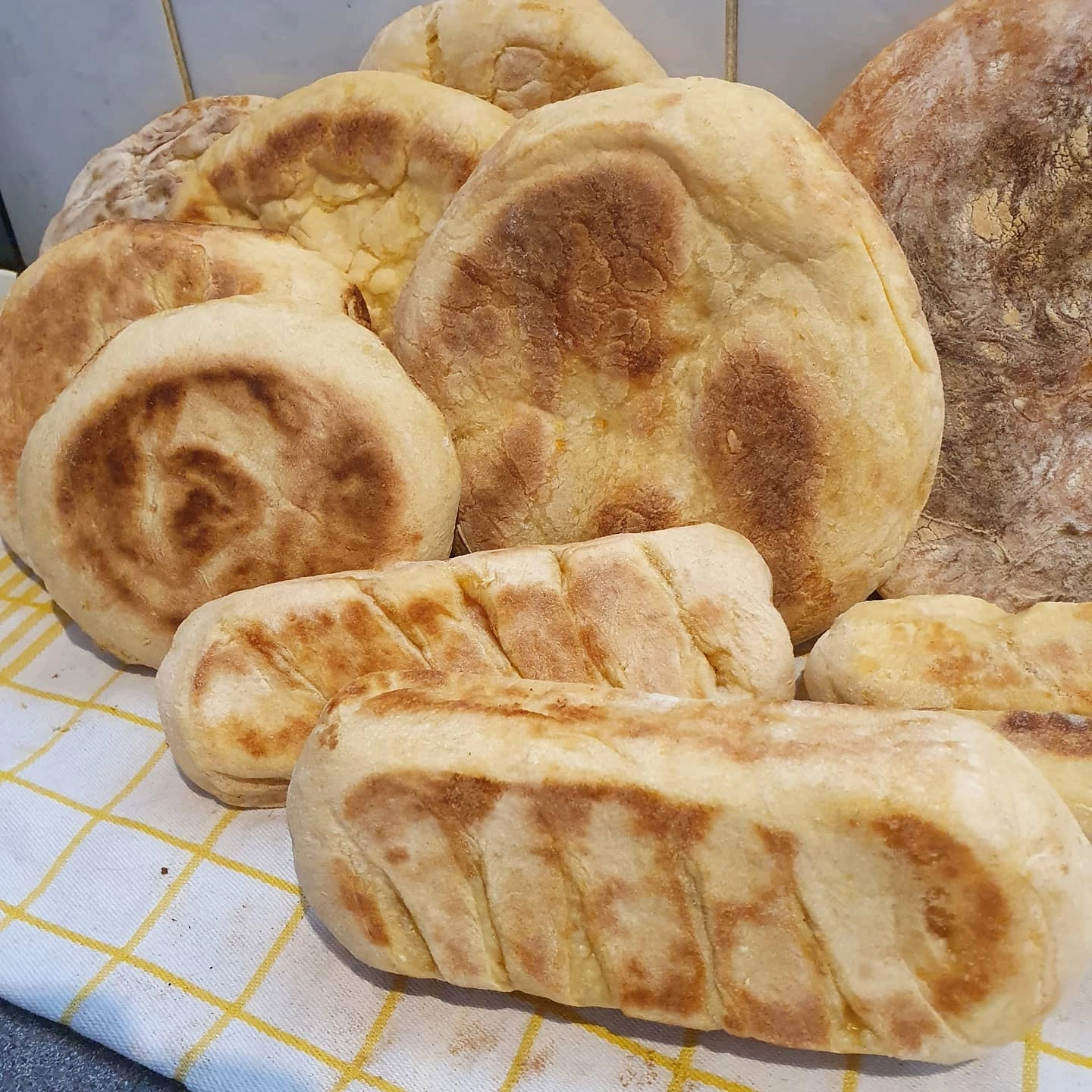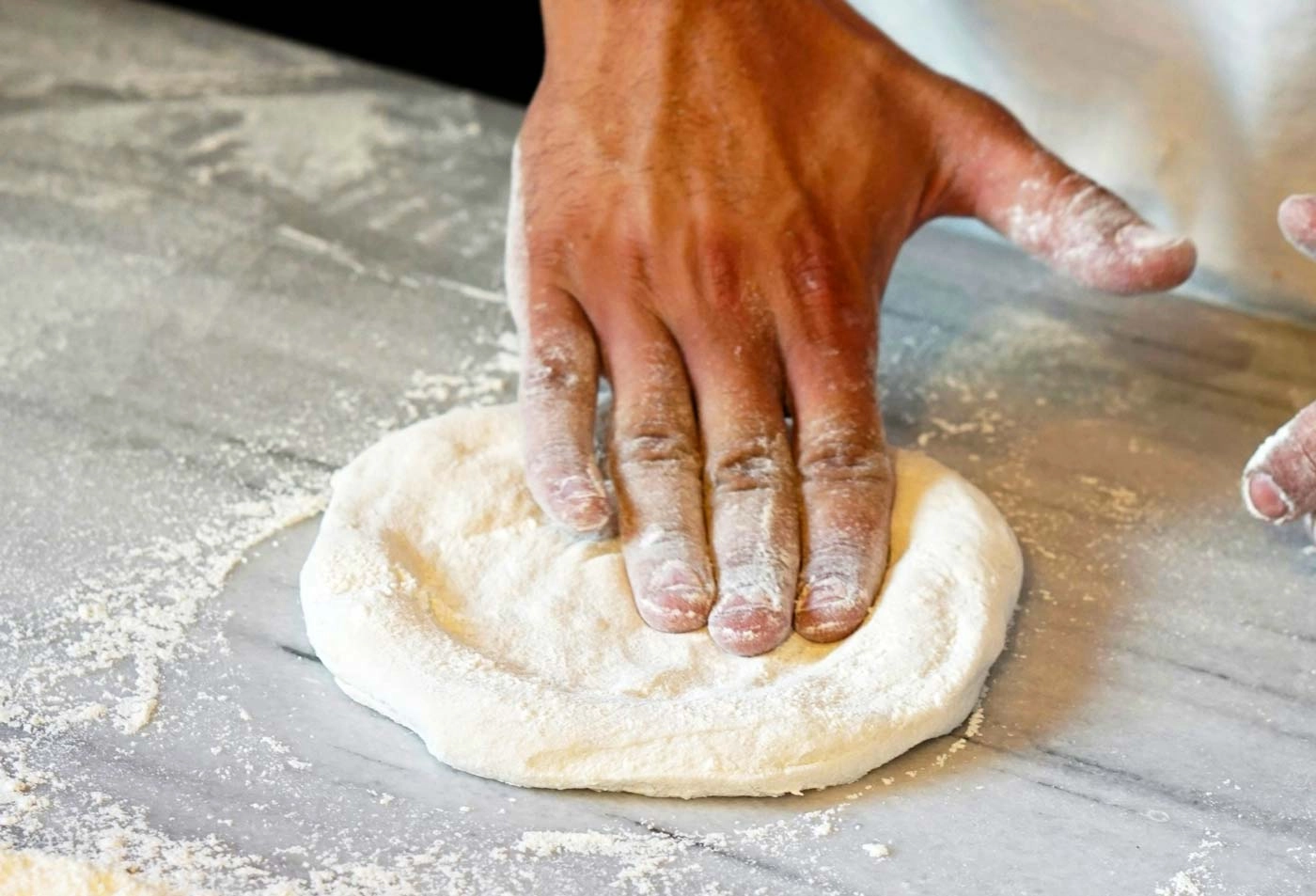A Culinary Legacy From Madeira's Past
Bolo do Caco, a traditional bread from Madeira, Portugal, holds a significant place in the island's culinary heritage, dating back to the 15th century. Bolo do Caco holds a significant place in the island's culinary heritage. Its origins lie in the Arab influence on Madeira, which brought expertise in sugarcane cultivation and flatbread-making to the island. Both Madeira Island and Porto Santo lay claim to the origins of Bolo do Caco to the round, flat bread that has a soft and slightly chewy texture.

What Does Bolo Do Caco Mean?
The name "Bolo do Caco" translates to Cake (Bolo) and flat basalt stone slab (Caco) in English, which references the traditional way of baking the bread on a flat piece of basalt rock or tile. It's a popular addition to meals in Madeira and is often served as a base for sandwiches with various fillings.
Innovation Born From Necessity
The bread's unique recipe includes flour, sweet potatoes, yeast, water, and salt. The addition of sweet potatoes, either white or orange, stems from historical shortages of cereals on the island, leading bakers to innovate with tuber root pulp (soft, inner tissue found inside tuberous roots such as potatoes or sweet potatoes).
Past And Modern Preparation
Traditionally, Bolo do Caco is baked on a basalt stone or tile (Caco) heated over high flames or embers. However, modern methods often involve using concrete slabs or cast iron plates due to technological advancements. Bolo de Caco can also be prepared in a pan.
The Unique Texture And Flavor Of Bolo Do Caco
Characterized by a hard but thin crust and a soft, airy crumb, Bolo do Caco has a slightly sweet flavor and aroma from the sweet potatoes and only a small amount of yeast. Traditional Bolo do Caco recipes are typically dairy-free, making them suitable for a vegan diet. Preparation on a heated basalt stone or tile adds a unique smokiness and crispness to the bread's crust, which explains its distinct flavor profile. It's commonly served warm with garlic butter as an appetizer or enjoyed as a sandwich with various fillings such as octopus, espetada, milho frito, or steak.
Bolo Do Caco, A Cultural Icon In Madeira
Beyond its culinary appeal, Bolo do Caco symbolizes Madeiran culture and history, making it a must-try for visitors to the island. All over Madeira, it is widely available in all supermarkets or bakeries. It is sold fresh or wrapped in bags. If Bolo do Caco is new to you and you ever find yourself in Madeira, be sure to savor this delicious bread and immerse yourself in its rich tradition.
Bolo Do Caco Recipe
Below is a delightful recipe for Bolo de Caco, prepared in a pan, that's perfect for serving up to 5 hungry diners.
Ingredients
310 g Sweet potato
310 g Bread flour
7 g Active yeast
Salt
180-195 ml water from boiled sweet potato
Butter, or plant-based alternative, a small chunk
1.5 - 2 cloves Garlic
Flat parsley
Preparation
Boil the sweet potato in a pot of lightly salted water, allowing it to simmer for about 20 minutes until it softens.
Next, remove the sweet potato from the water, setting the water aside for later use. Let the sweet potato cool down, then mash it thoroughly.
Once the water used for boiling the sweet potato cools to a warm temperature, take 150ml of it and mix it with the yeast, setting the mixture aside for 10 minutes to activate.
Combine the activated yeast mixture with the mashed sweet potato, ensuring thorough mixing, and add a pinch of salt.
Gradually add the mashed sweet potato into the flour, creating a cohesive dough.
Slowly add the remaining sweet potato water to the dough while kneading until the desired texture is achieved.
Sprinkle some flour over the dough, then cover it with a tea towel or clingfilm, allowing it to undergo its initial 40-minute fermentation period.
Once the dough has doubled in size, it's ready for the next step.
Divide the dough into 5 smaller portions, sprinkling them with flour and covering them with a tea towel for a second fermentation period of 15-20 minutes.
Prepare the garlic butter by mixing mashed garlic, chopped parsley, and salt into softened butter, then refrigerate it.
Heat a pan and place one portion of dough in it, flattening it slightly. Fry each side for 5-10 minutes until golden brown and tapping the bread produces a hollow sound.
Cover the cooked bread with a clean tea towel to keep them warm.
To serve, slice the bread and create sandwiches with the garlic butter spread inside. Cut the bread into quarters and enjoy your delicious creation.








Comments